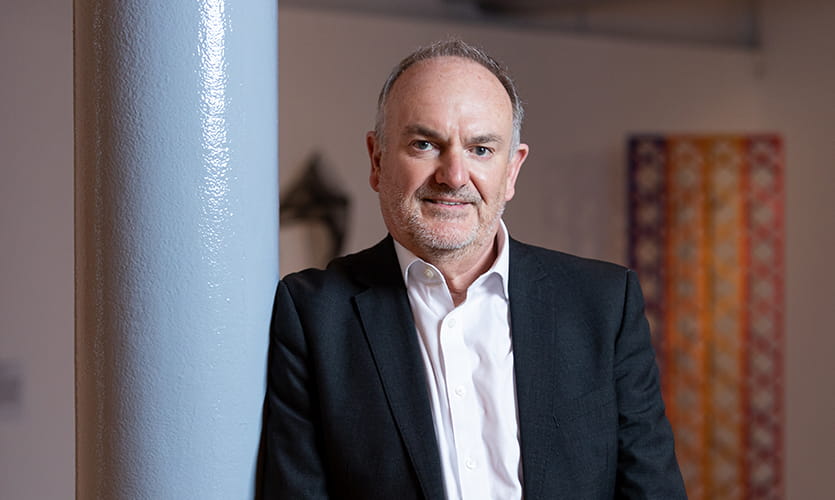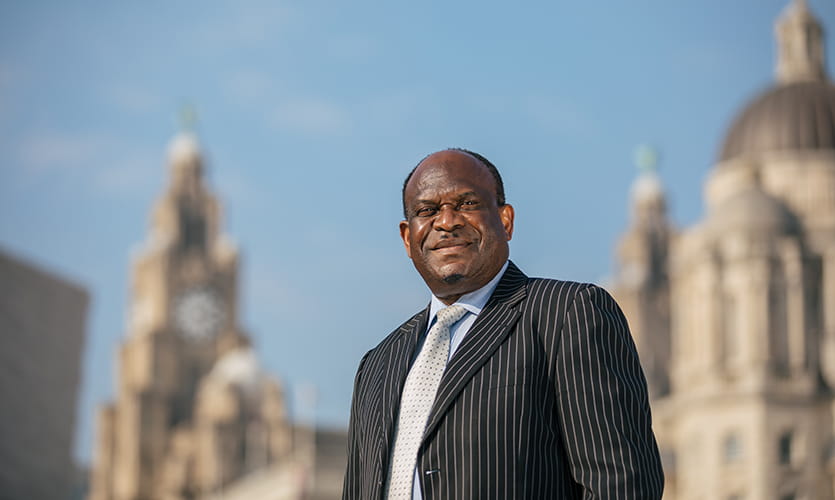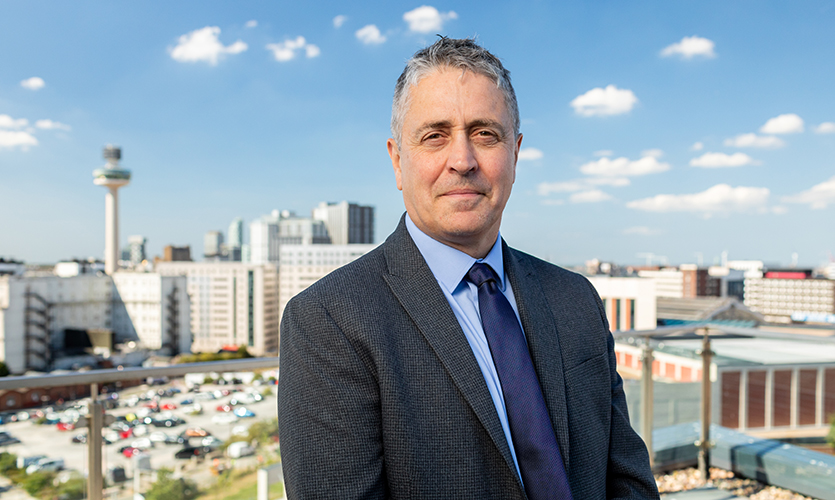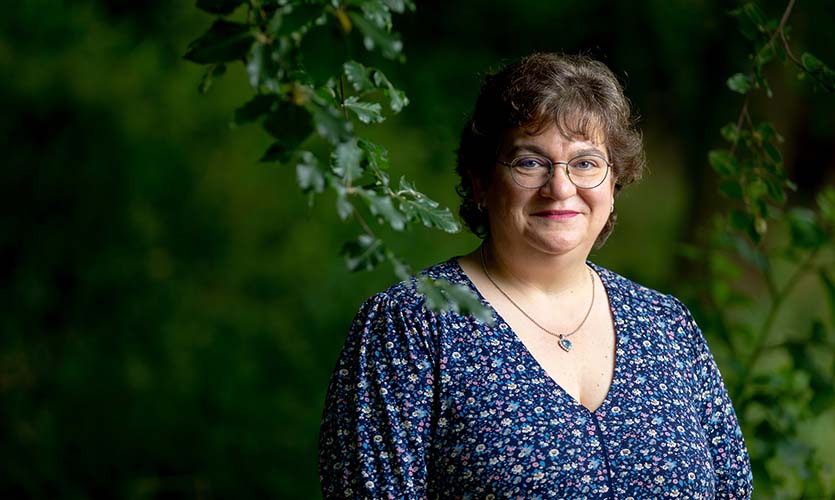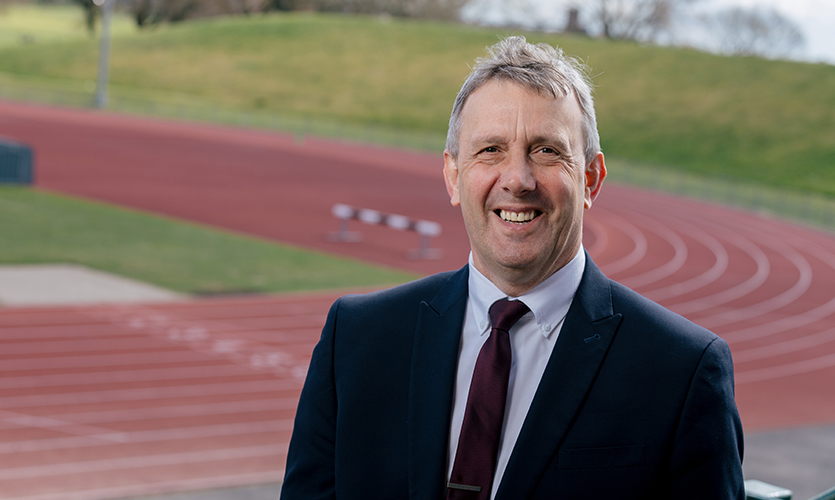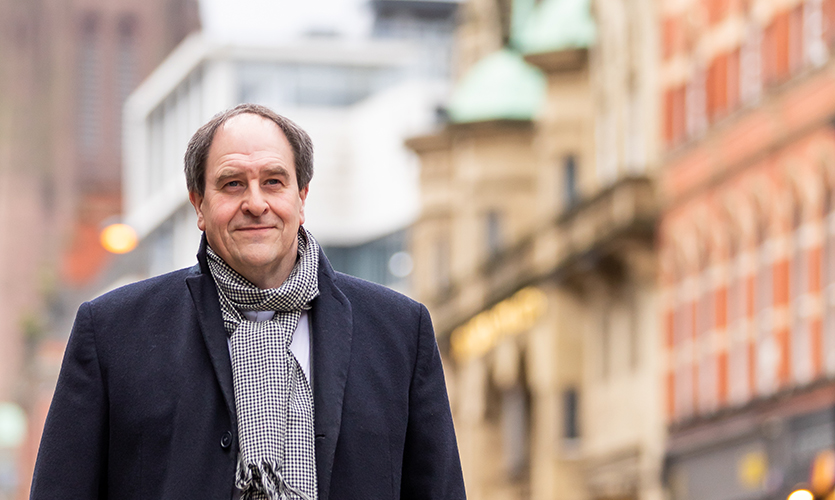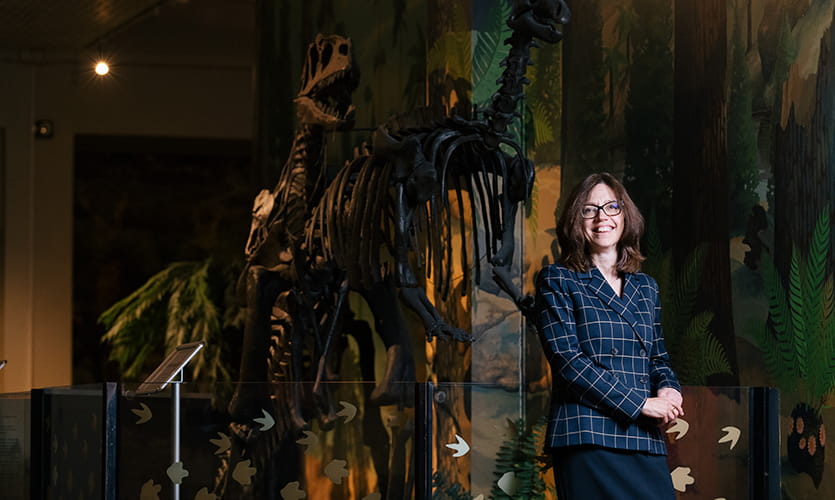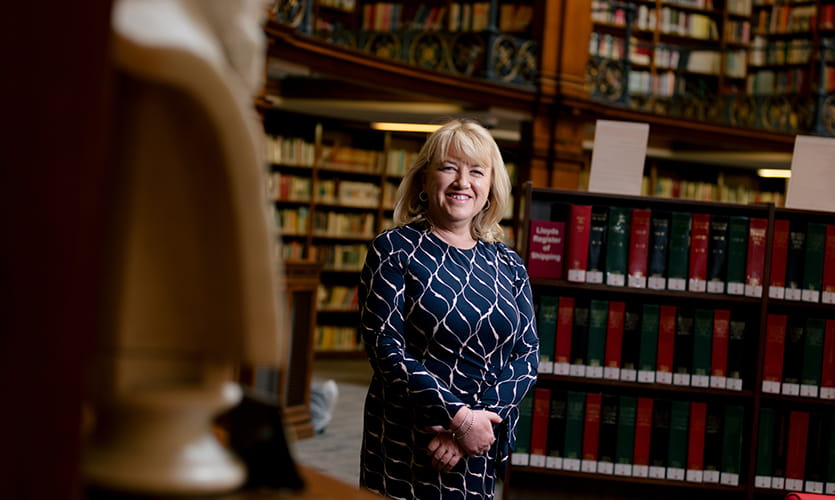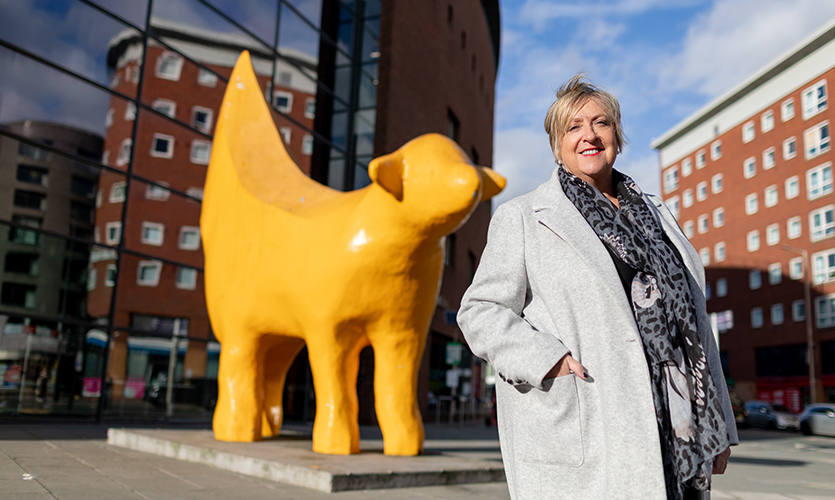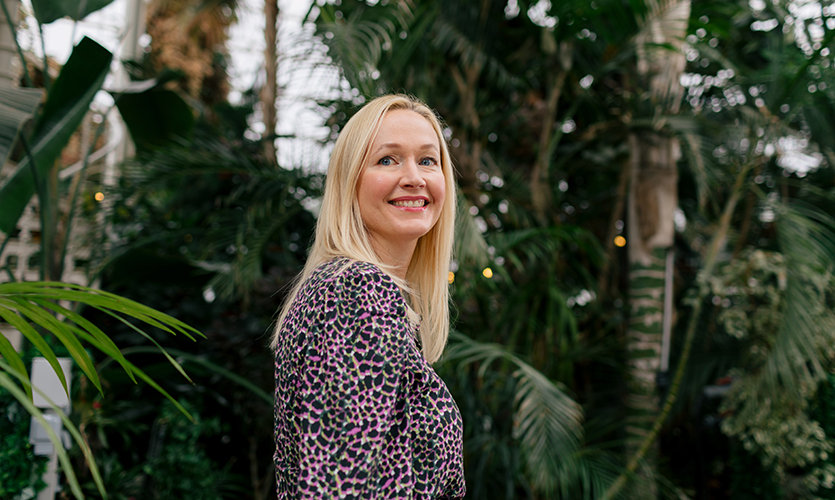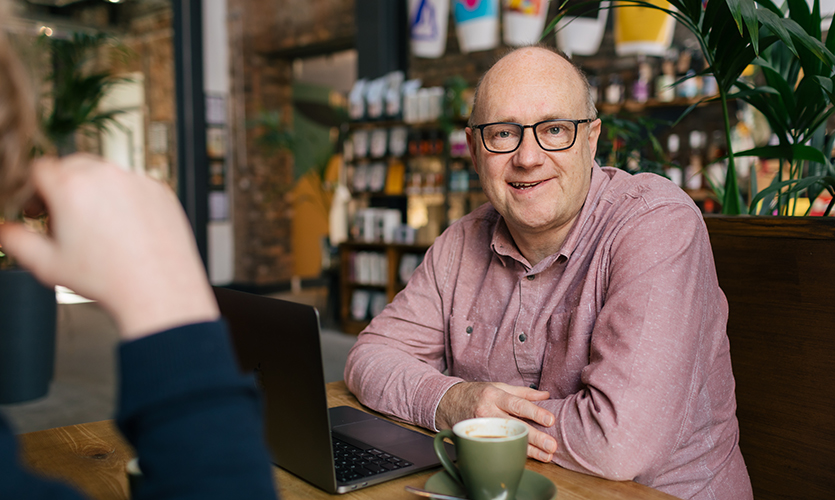My Liverpool: New executive portraits capture personal stories
Personal reflections on our great city of Liverpool underpin a new suite of portraits of the Vice-Chancellor and the Executive Leadership Team.
The PR images taken around the city echo our civic role as a university and moreover the personal affinities of our academic and administrative bosses.
Photographer Matt Thomas captured Vice-Chancellor and Chief Executive Professor Mark Power, the artist, at Tate Liverpool.
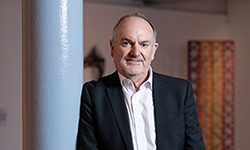 Mark says "I selected to have my profile photograph taken at the Tate Liverpool because it is one of my favourite places to visit and they host some of the most extraordinary programmes. As an artist I am drawn to seascapes and I spend a lot of time painting in Cornwall where I can usually be found wandering around the Tate at St Ives. We are really lucky to have the Tate in Liverpool, we have a lively and creative arts and cultural sector in the city and the Tate has been an enormous influence in that landscape. I also love the building, it’s been renovated with such care and attention, speaking to the heritage of the Albert Dock and yet so modern in its presence - it’s a really compelling space."
Mark says "I selected to have my profile photograph taken at the Tate Liverpool because it is one of my favourite places to visit and they host some of the most extraordinary programmes. As an artist I am drawn to seascapes and I spend a lot of time painting in Cornwall where I can usually be found wandering around the Tate at St Ives. We are really lucky to have the Tate in Liverpool, we have a lively and creative arts and cultural sector in the city and the Tate has been an enormous influence in that landscape. I also love the building, it’s been renovated with such care and attention, speaking to the heritage of the Albert Dock and yet so modern in its presence - it’s a really compelling space."
Professor Ndy Ekere, PVC Faculty of Engineering and Technology - The Pier Head
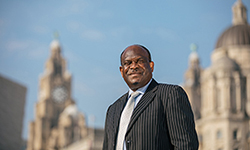 "LJMU’s great Maritime heritage and connections with Nautical Science education is the reason why I chose the Pier Head. I was thrilled to learn that the first formal classes in Nautical Studies were held at the Liverpool Mechanics' Institute in the 1820s and the origins of LJMU’s world-leading Astrophysics Research Institute can be traced back, at least in part, to the Liverpool Nautical College, now part of LJMU. LJMU's leadership in Nautical Science education started with the donation of the 5-inch Cooke equatorial telescope to the Nautical College in 1889 by wire manufacturer Thomas Glazebrook Rylands (1818-1900), and this leadership continues today with a project to build the world's largest robotic telescope, Liverpool Telescope 2, called the New Robotic Telescope."
"LJMU’s great Maritime heritage and connections with Nautical Science education is the reason why I chose the Pier Head. I was thrilled to learn that the first formal classes in Nautical Studies were held at the Liverpool Mechanics' Institute in the 1820s and the origins of LJMU’s world-leading Astrophysics Research Institute can be traced back, at least in part, to the Liverpool Nautical College, now part of LJMU. LJMU's leadership in Nautical Science education started with the donation of the 5-inch Cooke equatorial telescope to the Nautical College in 1889 by wire manufacturer Thomas Glazebrook Rylands (1818-1900), and this leadership continues today with a project to build the world's largest robotic telescope, Liverpool Telescope 2, called the New Robotic Telescope."
Professor Joe Yates, PVC Faculty of Arts, Professional and Social Studies - Redmonds Building, roof-terrace
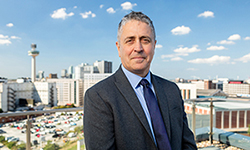 "Liverpool looks out to sea and from the terrace I can see the skyline, the river and the docks. It grounds me. If I look to the right, I can see the docks in Bootle and the communities which grew up around them. These are the docks where my family arrived as immigrants, where they worked as dockers and carters, where my great uncles and grandfather set sail from and where their families waited anxious for their return. Looking across the city reminds me of how my own biography has been shaped by the river and the diversity and global perspective it brought through immigration."
"Liverpool looks out to sea and from the terrace I can see the skyline, the river and the docks. It grounds me. If I look to the right, I can see the docks in Bootle and the communities which grew up around them. These are the docks where my family arrived as immigrants, where they worked as dockers and carters, where my great uncles and grandfather set sail from and where their families waited anxious for their return. Looking across the city reminds me of how my own biography has been shaped by the river and the diversity and global perspective it brought through immigration."
Professor Laura Bishop, PVC Faculty of Science - Anglican Cathedral
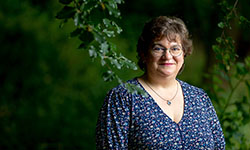 "The Anglican Cathedral is a touchstone for our city and our university. It’s a highly visible Liverpool landmark that can literally be seen for miles in all directions, but also marks an important milestone in the LJMU student life cycle as the home of our graduation ceremonies. This picture is taken in the gardens of the cathedral during a break from the ceremonies. The gardens offer a peaceful retreat from the hustle and bustle of the city; a relaxing green space for contemplation in the shadow of some truly monumental architecture."
"The Anglican Cathedral is a touchstone for our city and our university. It’s a highly visible Liverpool landmark that can literally be seen for miles in all directions, but also marks an important milestone in the LJMU student life cycle as the home of our graduation ceremonies. This picture is taken in the gardens of the cathedral during a break from the ceremonies. The gardens offer a peaceful retreat from the hustle and bustle of the city; a relaxing green space for contemplation in the shadow of some truly monumental architecture."
Hannah Argo, Finance Director - Lime Street Station
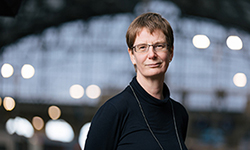 "My first introduction to Liverpool was by train and coming into Lime Street station was something of a revelation. Emerging from that long tunnel into this incredible vaulted station it’s quite something to see and the sense that you have arrived at an exciting destination never leaves me – which is just as well because I usually travel in by train. It’s incredible to think it was built in the 1830s shortly after the university was founded and now, looking up as you come into the station when you can see the corner of the Student Life Building, I really do sense that LJMU is in the heart of the city from that perspective alone."
"My first introduction to Liverpool was by train and coming into Lime Street station was something of a revelation. Emerging from that long tunnel into this incredible vaulted station it’s quite something to see and the sense that you have arrived at an exciting destination never leaves me – which is just as well because I usually travel in by train. It’s incredible to think it was built in the 1830s shortly after the university was founded and now, looking up as you come into the station when you can see the corner of the Student Life Building, I really do sense that LJMU is in the heart of the city from that perspective alone."
Professor Keith George, PVC Research and Knowledge Exchange - Wavertree Athletics Track
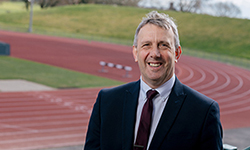 "Wavertree links to my background in Sport and Exercise Sciences but also the facilities were an important hub for the Liverpool Active City plan launched in 2005 by Liverpool City Council (with LJMU as a partner) that has underpinned the Global Active City movement which LJMU remains a central partner of with multiple international stakeholders."
"Wavertree links to my background in Sport and Exercise Sciences but also the facilities were an important hub for the Liverpool Active City plan launched in 2005 by Liverpool City Council (with LJMU as a partner) that has underpinned the Global Active City movement which LJMU remains a central partner of with multiple international stakeholders."
Dr Tim Nichol, PVC Faculty of Business and Law - Everyman/Hope Street
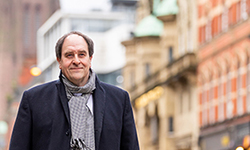 "My first visit to Liverpool was when I was 14 and I sailed out of Liverpool on the SS Uganda to take part in a music cruise which culminated with a concert at the Philharmonic. The image I took away from that visit was standing on a street with a cathedral at each end. It was a striking impression and the only one I had of Liverpool. When I came for my Interview for the Deanship I arrived late in the evening and had been booked into the Hope Street hotel. I recalled little of the journey to the hotel but in the morning I stepped into Hope Street and was confronted by the image that had remained - that of the two Cathedrals. Since then there have been many visits to Hope Street - to the restaurants, the Philharmonic and the Everyman and it has been great taking my kids to their first concerts, plays and pantomimes. The Everyman, in particular, is a place I love going - particularly because of the way it nurtures talent and is a place where the city and region’s voice is heard through the creative arts."
"My first visit to Liverpool was when I was 14 and I sailed out of Liverpool on the SS Uganda to take part in a music cruise which culminated with a concert at the Philharmonic. The image I took away from that visit was standing on a street with a cathedral at each end. It was a striking impression and the only one I had of Liverpool. When I came for my Interview for the Deanship I arrived late in the evening and had been booked into the Hope Street hotel. I recalled little of the journey to the hotel but in the morning I stepped into Hope Street and was confronted by the image that had remained - that of the two Cathedrals. Since then there have been many visits to Hope Street - to the restaurants, the Philharmonic and the Everyman and it has been great taking my kids to their first concerts, plays and pantomimes. The Everyman, in particular, is a place I love going - particularly because of the way it nurtures talent and is a place where the city and region’s voice is heard through the creative arts."
Professor Clare Milsom, Registrar and Chief Operating Officer - The World Museum
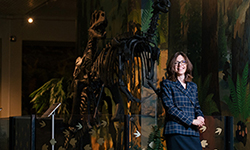 "Of all the amazing exhibitions in Liverpool, The World Museum with its collections and displays of life sciences, earth sciences and human cultures, is my favourite place to visit. Right next door to Byrom Street I used to bring my geology students here on their first ‘bones and stones’ field trip. Preserved only as footprints the ‘invisible dinosaur’ was the highlight of our expedition. When they were little I would take my children to the fossil galleries hoping to shape them into mini palaeontologists but it was the planetarium and aquariums that stole their attention. Such a rich source of delight and wonder The World Museum never fails in its mission to create memorable experiences and challenge expectations and will always have a special place in my personal history in Liverpool."
"Of all the amazing exhibitions in Liverpool, The World Museum with its collections and displays of life sciences, earth sciences and human cultures, is my favourite place to visit. Right next door to Byrom Street I used to bring my geology students here on their first ‘bones and stones’ field trip. Preserved only as footprints the ‘invisible dinosaur’ was the highlight of our expedition. When they were little I would take my children to the fossil galleries hoping to shape them into mini palaeontologists but it was the planetarium and aquariums that stole their attention. Such a rich source of delight and wonder The World Museum never fails in its mission to create memorable experiences and challenge expectations and will always have a special place in my personal history in Liverpool."
Maria Burquest, University Secretary and General Counsel - Central Library
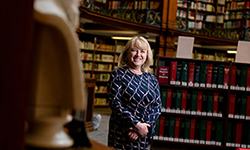 "I was photographed in the Picton Reading Room on William Brown Street, which is part of the Liverpool Central Library. I studied in there as a teenager and loved its silence, sense of history and grandeur. It was modelled after the British Museum Reading Room and was the first public building in Liverpool to employ electric lighting. It’s a truly fabulous building."
"I was photographed in the Picton Reading Room on William Brown Street, which is part of the Liverpool Central Library. I studied in there as a teenager and loved its silence, sense of history and grandeur. It was modelled after the British Museum Reading Room and was the first public building in Liverpool to employ electric lighting. It’s a truly fabulous building."
Professor Raphaela Kane, PVC Faculty of Health - Superlambanana
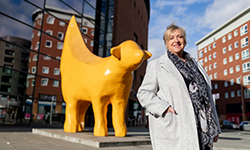 "As a relative newcomer to Liverpool, the Superlambanana was an obvious choice for me as I consider the city and all it has to offer. Liverpool natives and visitors are surprised when I tell them of its origins, as it has just become an accepted symbol of the city. Designed by a New York artist Taro Chiezo, it is both a comment on genetic engineering, a topic relevant to our various health studies but also heavily influenced by the history of Liverpool and specifically the port – where sheep/wool was a significant export and bananas a major import. To me it is a quirky entrance to our front door on Tithebarn Street, marking the place where I work and where many of our Faculty of Health students are welcomed and supported in their studies. Our visitors are always directed to find the Lambanana. Being from Ireland myself and recognising the long tradition of the Irish in this great city, I think the Lambanana is also a reflection of that shared wit and humour and is an icon that simply makes me smile."
"As a relative newcomer to Liverpool, the Superlambanana was an obvious choice for me as I consider the city and all it has to offer. Liverpool natives and visitors are surprised when I tell them of its origins, as it has just become an accepted symbol of the city. Designed by a New York artist Taro Chiezo, it is both a comment on genetic engineering, a topic relevant to our various health studies but also heavily influenced by the history of Liverpool and specifically the port – where sheep/wool was a significant export and bananas a major import. To me it is a quirky entrance to our front door on Tithebarn Street, marking the place where I work and where many of our Faculty of Health students are welcomed and supported in their studies. Our visitors are always directed to find the Lambanana. Being from Ireland myself and recognising the long tradition of the Irish in this great city, I think the Lambanana is also a reflection of that shared wit and humour and is an icon that simply makes me smile."
Tina Purkis, HR Executive Director - The Palm House, Sefton Park
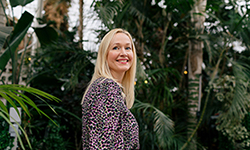 "Just a short ride away from the city centre lies one of the most incredible structures - Liverpool’s ‘great conservatory’ the Palm House. I’m a big fan of taking time to appreciate open spaces and Liverpool has some amazing vistas but there’s something nurturing about green spaces and the Palm House is a stunning centre piece to Sefton Park. The botanical collection which is still going strong was established in 1802 by William Roscoe who was one of the university’s founders and although we use more modern terms to address health and wellbeing, the Palm House has the same guiding principles of using nature for balance and self-care."
"Just a short ride away from the city centre lies one of the most incredible structures - Liverpool’s ‘great conservatory’ the Palm House. I’m a big fan of taking time to appreciate open spaces and Liverpool has some amazing vistas but there’s something nurturing about green spaces and the Palm House is a stunning centre piece to Sefton Park. The botanical collection which is still going strong was established in 1802 by William Roscoe who was one of the university’s founders and although we use more modern terms to address health and wellbeing, the Palm House has the same guiding principles of using nature for balance and self-care."
Professor Phil Vickerman, PVC Student Experience - Baltic Triangle
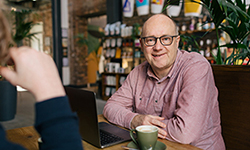 "The Baltic is one of the most creative and innovative quarters in the city and houses hundreds of small enterprises feeding off the energy and enthusiasm of this cultural hub. Our students love this area and many of the new businesses growing out of this hub are run by our graduates; when I came to get my photograph taken here I bumped into some of the officers from our students union who were meeting up for a coffee - it’s the kind of place that makes things happen through conversations and chance meetings – and the street art is just amazing."
"The Baltic is one of the most creative and innovative quarters in the city and houses hundreds of small enterprises feeding off the energy and enthusiasm of this cultural hub. Our students love this area and many of the new businesses growing out of this hub are run by our graduates; when I came to get my photograph taken here I bumped into some of the officers from our students union who were meeting up for a coffee - it’s the kind of place that makes things happen through conversations and chance meetings – and the street art is just amazing."

